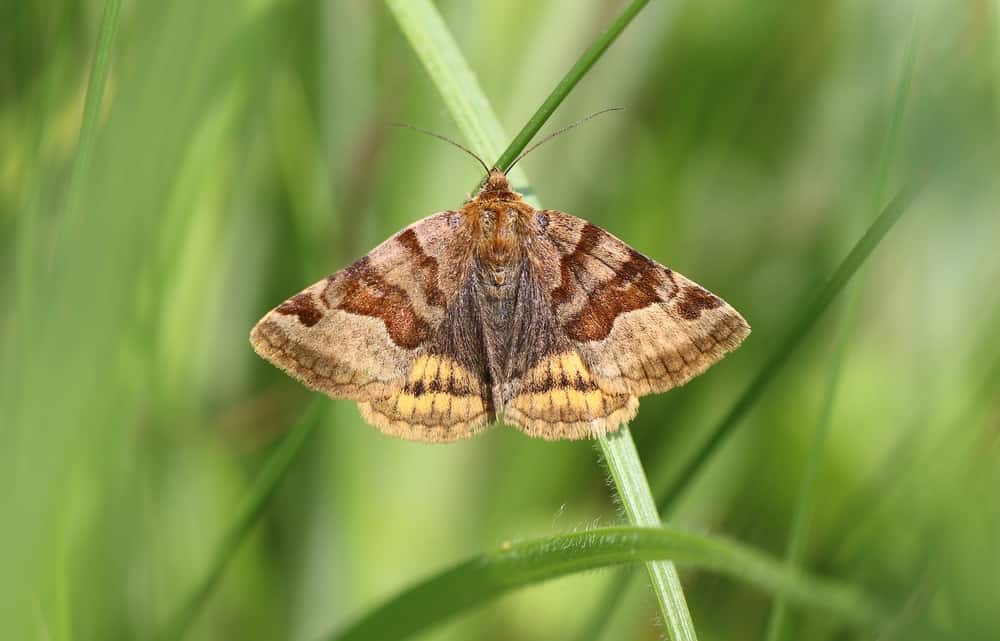When you hear the word metamorphosis, you probably picture a tiny caterpillar blossoming and spreading its wings to become a full-fledged butterfly. But did you know that butterflies aren’t the only arthropods that go through a complete metamorphosis? Moths do, too!
Moths might not be as glamorous as butterfliers, but their life cycle is quite similar. And while people don’t usually like moths because of the damage they can do to clothes and homes, their life cycle is still fascinating.
Curious about the life cycle of a moth? Stick around to learn how they go from eggs to larvae to full-fledged adult moths. Keep reading our guide to discover more about this interesting process.
The Life Cycle of a Moth
Stage 1: Egg
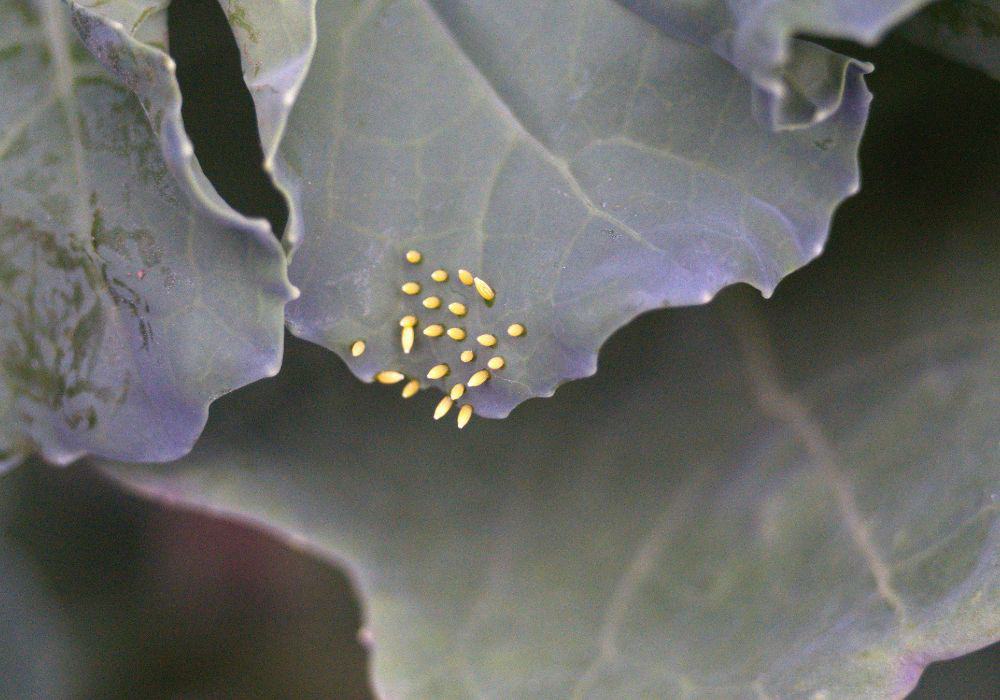
The cycle starts with a female moth laying eggs. Moth eggs are round, translucent, and incredibly small—they have a microscopic size of just about 0.5 mm.
The females will usually lay clusters of eggs on plants with huge leaves so that when they hatch, they’ll have something to eat. They try to position the eggs on the underside of these leaves to hide them from predators that consider them a food source, like wasps, spiders, beetles, and birds.
The egg stage is the most vulnerable one in a moth’s life. Because they’re super small and are a prime target for predators, it’s challenging for eggs to survive and further develop. That’s why female moths lay multiple batches of eggs during their adult life.
Female moths lay over 150 eggs in the span of a month. Each of these eggs will start hatching in about a week. From there, we enter the second stage of a moth’s life cycle.
Stage 2: Caterpillar
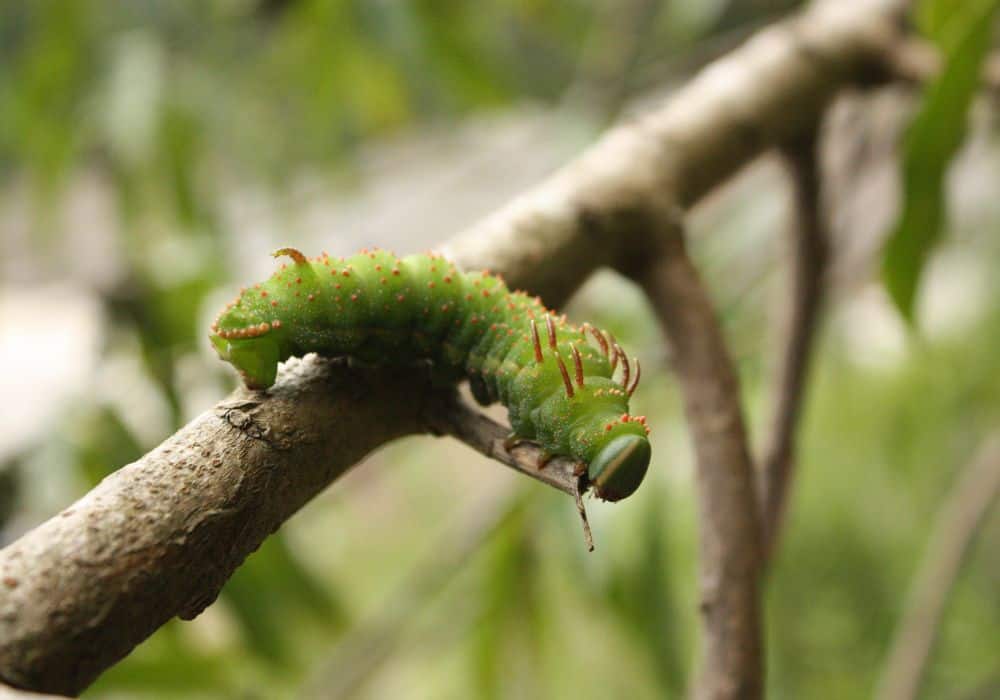
The second stage is the larval stage. When the moth eggs hatch, a small caterpillar or larva comes out with a head and worm-like body.
This next stage is all about the caterpillar eating well and growing its body. Some of their favorite things to munch on to grow include its host plant, furs, wool, leather, and other fabrics. This is why clothes moths ravage your closets—they eat the fibers from your clothing.
These caterpillars are encased in a cuticle, also known as their exoskeleton. Like snakes, caterpillars must constantly shed their exoskeleton as they grow bigger.
This process is called “molting,” and it’s triggered by limited oxygen intake. A moth caterpillar will have a harder time breathing in its outer skin as it grows bigger. When it needs more oxygen, it will start to molt and shed. Most moth larvae will shed their skin 4-5 times.
Every time a larva sheds its skin, it passes an “instar.” The first time the egg hatches, the caterpillar gets its first instar. Its second instar occurs when it sheds its skin for the first time. Each time it molts and has an instar, it eats its old cuticle to aid in the growth and development of its body.
The number of instars a larva goes through depends on its species. Some only have a couple of instars before they’re done with the larval stage, while others have plenty of instars. After the final instar, the caterpillar will look bigger and more mature than when it first came out of the egg.
The larval stage lasts around 1-2 months. Each moth caterpillar will grow to become around 0.5-2.5 inches long, depending on the species.
Stage 3: Pupa
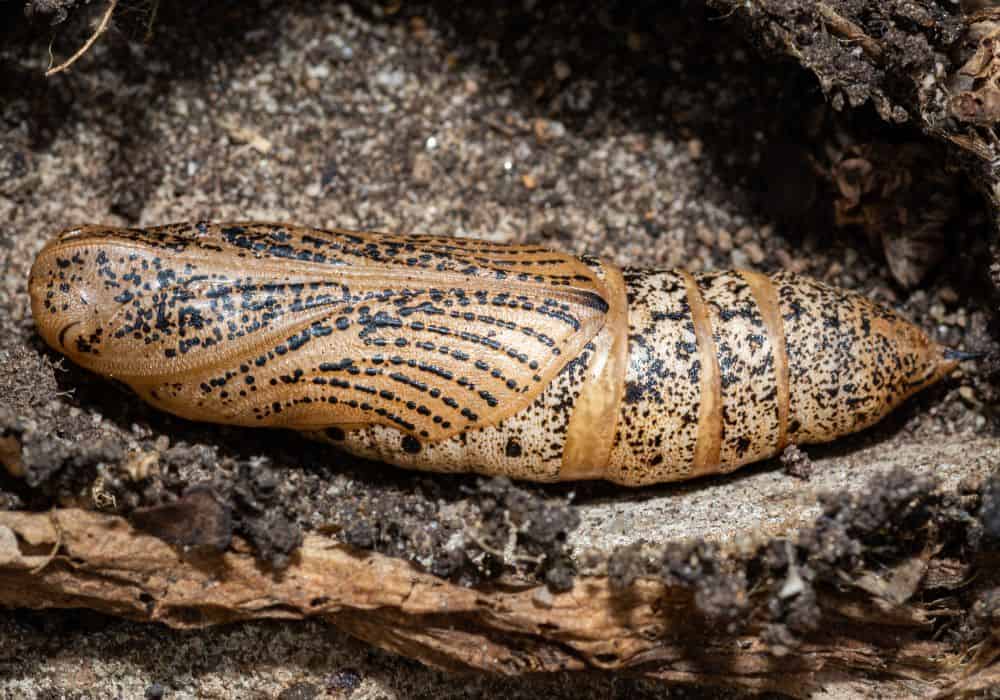
When the larva is done going through all its instars, it stops molting and prepares to wrap itself in a pupa (also called a chrysalis or cocoon).
Before doing so, it looks for a safe, undisturbed space where it can rest inside its cocoon, like cracks in tree bark or in piles of wood. When it finds a comfortable spot, it spins silk around itself to create a hard shell around its body. Humans can harvest these cocoons to create fine, silk fabrics.
This cocoon stays put and is dormant for about two weeks. Inside the pupa, the caterpillar’s cells further develop and are rearranged to prepare itself for its emergence as an adult moth.
Learn more about what happens inside a moth’s cocoon during its pupa phase by watching this informative video:
While a moth is in its pupal stage, it is prone to predator attacks. The caterpillar is trapped inside the cocoon and can’t defend itself, making it helpless against spiders, hornets, and even ants.
If the pupa is lucky enough to survive environmental threats, it breaks down to reveal an adult moth. That leads us to the final stage in a moth’s life cycle.
Stage 4: Adult Moth
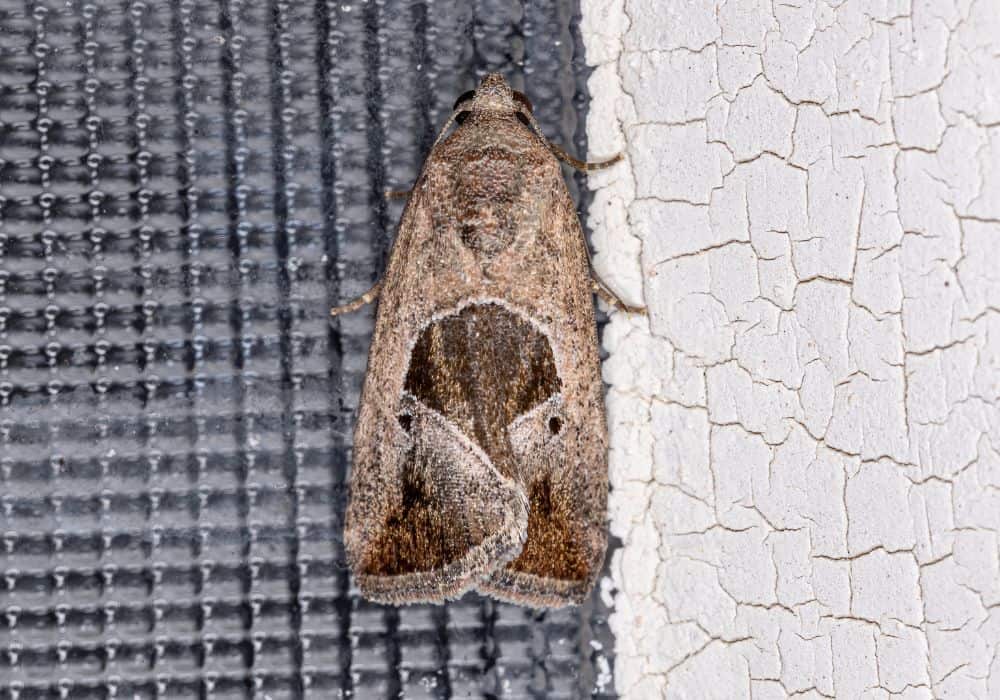
When the moth emerges from its pupa, it doesn’t look like a perfect moth with huge, strong wings yet. Instead, it comes out with damp, wrinkled wings and a swollen stomach.
Soon, its body starts recovering from its time cramped up in the cocoon. Its wings dry up and get strong enough for flying. This process is extremely fast, occurring about 30 minutes after the moth breaks out of its pupa.
Adult moths can live for two weeks to a full month. During this time, its main goal is to reproduce and lay as many eggs as possible to continue the life cycle. They’ll start mating a little over a week from emerging from their cocoon.
How do adult moths reproduce?
A male and female moth come together to reproduce. It all starts with the courtship stage, where a male moth will do aerial dances and spread its beautiful wings to woo his female moth of choice. Both moths will also release pheromones to help them locate and select a mate.
If a female accepts a male, they will enter copulation. The male moth will transfer sperm to the female from his claspers. The female will then store the sperm and use it to fertilize her eggs later.
Male moths release toxins that keep predators from coming close to them while they mate with the females. That way, the reproduction process isn’t disturbed.
When the female is ready to lay her eggs, she will find the optimal location that will keep them safe. She will look for suitable host plants that can protect her eggs and serve as a food source once they hatch into caterpillars. And with that, the life cycle starts again.
Common Reasons Moths Die in Their Adult Life
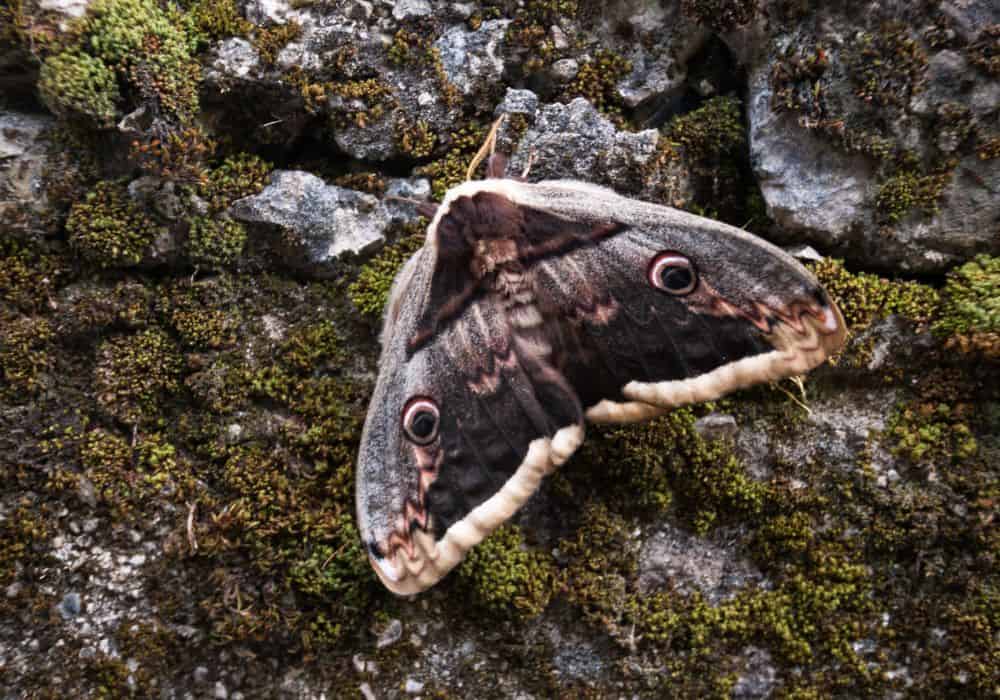
We’ve talked extensively about how a moth comes into the world as an egg and develops into a full-fledged adult. But the life cycle will end for every moth as well. Here are some of the most common reasons why moths die after their very few months on this earth:
- Attraction to light sources: Moths are known to be drawn to light sources. However, this can lead them to their untimely demise. If a moth gets too close to a flame or a piping-hot light bulb, it can die instantaneously from the high temperatures.
- Old age: Many moths also die of natural causes, aka they get too old and frail. This happens when they’ve been adults for a couple or so months, which is way too long compared to the average 2-4 weeks an adult moth usually survives for.
- Predators: Some unlucky moths will succumb to predator attacks. Bats, spiders, birds, hornets, and other predator insects may gobble them up as food, leading to their demise. Predators can attack moths at any life stage of theirs, especially in the egg and pupa stages.
- Pesticides: Moths can become pests in homes. If they bother humans too much, they could suffer after pest control services spray pesticides all over their nest inside a house.
- Starvation: If moths can’t find a reliable food source—whether it’s host plants or a pantry stocked with yummy food—they can die of starvation.
- Diseases: Like any other animal or insect, moths can get sick. They can catch diseases from pathogens in the environment, or if it’s passed on to them by another animal.
- Environmental changes: Extreme weather like drought, typhoons, and snowstorms may also kill moths, either by destroying their habitat or flinging them around. Pollution in the city can contaminate their food sources and destroy their home, making it difficult for them to survive.
Conclusion
The transformation and life cycle of a moth are very similar to that of a butterfly. It starts as an egg, and once it hatches, it becomes a larva. Over time, the larva will build itself a pupa (or cocoon) until it’s ready to emerge as the flying moth we are all familiar with.
Most moths live very quick lives. Their entire life cycle will be complete in about three or so months. And if they mate and lay eggs during their adult life, the cycle repeats over and over again.
We hope you’ve learned a thing or two about the fascinating life cycle of a moth from our guide. Keep exploring our page to learn more about the lives of insects. Drop a comment below if you have any other questions for us!
